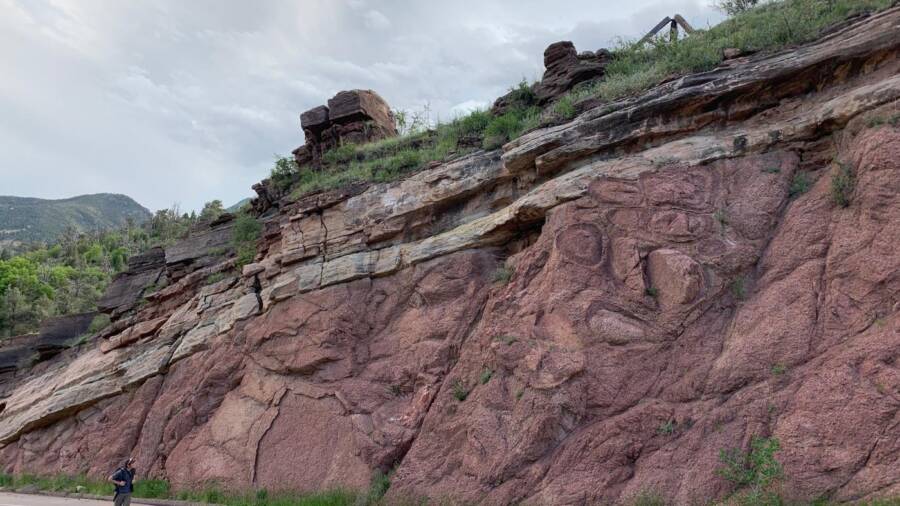A new geological study challenges an old theory that scientists have previously used to account for these gaps.

PixabayGeologists are trying to figure out why there are layers of time missing from Earth’s geological record.
For some time, scientists have puzzled over layers of rock missing from Earth’s geological record. Over Earth’s evolution, layers of rock sediment formed one on top of the other and each layer represents a different time period in Earth’s history. But there are layers of sediment missing from this record that span hundreds of millions of years — and scientists think they have finally figured out why that is.
The new study suggests that these gaps were likely created by the planet’s moving tectonic plates.
Geological gaps in Earth’s history are known as “unconformities” and the largest and most famous collection of gaps is known as the Great Unconformity, which ends roughly 550 million years ago and begins perhaps more than a billion years ago.
Scientists have widely hypothesized that the Great Unconformity was caused by a global erosion event during the phase of Earth’s evolution known as “Snowball Earth,” which occurred twice between 715 and 640 million years ago and saw the planet completely covered in ice.
However, a team of researchers now believe that tectonic movement is actually responsible for these missing layers. In the study, scientists examined the Great Unconformity as it appears in a granite outcrop at Colorado’s Pikes Peak. Unconformities, however, appear all over the world.

Rebecca FlowersThese layers of missing sediment represent millions of years of Earth’s evolution that remain unaccounted for. This is a section of the largest gap known as the “Great Unconformity” as it appears in Colorado.
Researchers examined samples of minerals and crystals from the surrounding rock in order to determine the thermal history of the rock layers.
Their analysis found that the older rock layer at Pikes Peak had actually eroded before the first phase of Snowball Earth, suggesting that glacial erosion could not be responsible for the Great Unconformity in this region.
Instead, the team suggested a different theory: that regional tectonic activity wiped out the older sentiments at Pikes Peak. More specifically, they believe that the tectonic processes associated with the formation and break up of Rodinia — a Neoproterozoic supercontinent that existed about one billion years ago before Snowball Earth — erased the layers of sediment from Earth’s geological record.
There is another part of the Snowball Earth theory that this recent study also challenged. The theory was that the same erosion that caused the Great Unconformity may have also seeded Earth with nutrients that sparked another milestone in the planet’s evolution: the Cambrian explosion, an event that marked the emergence of complex life about 541 million years ago.
Instead, the new research suggests that the Great Unconformity in this area formed long before the Cambrian explosion.
“If major erosion occurred several hundred million years before the Cambrian explosion, then it suggests that these events [the Cambrian explosion and Great Unconformity erosion] are not linked,” said Rebecca Flowers, the leader of the study and an associate professor of geological sciences at the University of Colorado.
“Our results indicate that at Pikes Peak in Colorado, the Great Unconformity erosion surface formed several hundred million years before the Cambrian explosion.”

Wikimedia CommonsThe new study challenges the notion that the Great Unconformity was created as a result of geological events that took place during Snowball Earth.
Determining how these chunks of time within the geological record went missing can help scientists to assemble a more complete history of Earth. With that in mind, Flowers and her team will be examining other sections of the Great Unconformity from around the world. The researcher wonders whether one global event erased these moments from the geological record or if regional events did.
“The goal of this additional work is to determine if there was a massive, globally synchronous erosion event as some have proposed that lead to a singular ‘Great Unconformity’ or if there are multiple ‘Great Unconformities’ that developed at different times, in different places, with different causes,” she said.
In a statement, Flowers concluded that “researchers have long seen this as a fundamental boundary in geologic history. There is a lot of the geological record that is missing, but just because it’s missing doesn’t mean that this history is simple.”
Although we may not have reached a satisfying conclusion to this mystery yet, scientists like Flowers are searching for answers the world over.
Next, read about how parts of the Grand Canyon were discovered on the Australian island of Tasmania. Then check out how a lost continent was found buried beneath southern Europe.





